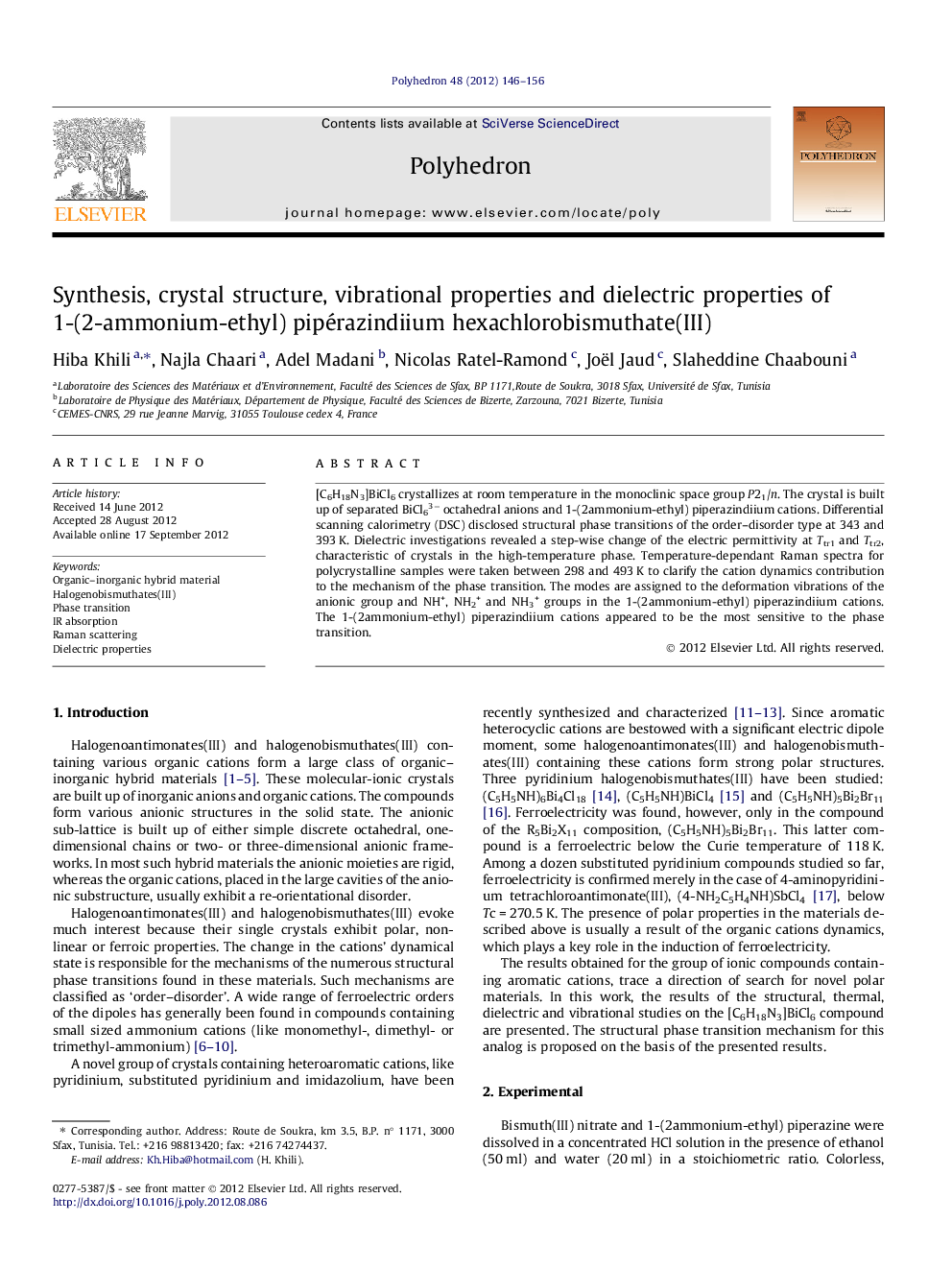| کد مقاله | کد نشریه | سال انتشار | مقاله انگلیسی | نسخه تمام متن |
|---|---|---|---|---|
| 1335880 | 979557 | 2012 | 11 صفحه PDF | دانلود رایگان |

[C6H18N3]BiCl6 crystallizes at room temperature in the monoclinic space group P21/n. The crystal is built up of separated BiCl63− octahedral anions and 1-(2ammonium-ethyl) piperazindiium cations. Differential scanning calorimetry (DSC) disclosed structural phase transitions of the order–disorder type at 343 and 393 K. Dielectric investigations revealed a step-wise change of the electric permittivity at Ttr1 and Ttr2, characteristic of crystals in the high-temperature phase. Temperature-dependant Raman spectra for polycrystalline samples were taken between 298 and 493 K to clarify the cation dynamics contribution to the mechanism of the phase transition. The modes are assigned to the deformation vibrations of the anionic group and NH+, NH2+ and NH3+ groups in the 1-(2ammonium-ethyl) piperazindiium cations. The 1-(2ammonium-ethyl) piperazindiium cations appeared to be the most sensitive to the phase transition.
The structure of [C6H18N3]BiCl6 is made up of monomeric BiCl63- anion and one crystallographically independent triprotonated 1-(2-ammonium-ethyl) piperazindiium cation. Differential scanning calorimetry, dielectric measurement and Raman spectroscopy studies were carried out and notice the appearance of two phase transitions.Figure optionsDownload as PowerPoint slideHighlights
► The [C6H18N3]BiCl6 is an organic/inorganic hybrid compound.
► The crystal packing is governed by ionic N–H...Cl hydrogen bonds.
► The vibrational properties were studied by Raman scattering and infrared spectroscopy.
► Differential scanning calorimetry indicates the presence of two phase transitions at 343 and 393 K.
► Dielectric measurement and Raman spectroscopy studies confirm these phase transitions.
Journal: Polyhedron - Volume 48, Issue 1, 14 November 2012, Pages 146–156